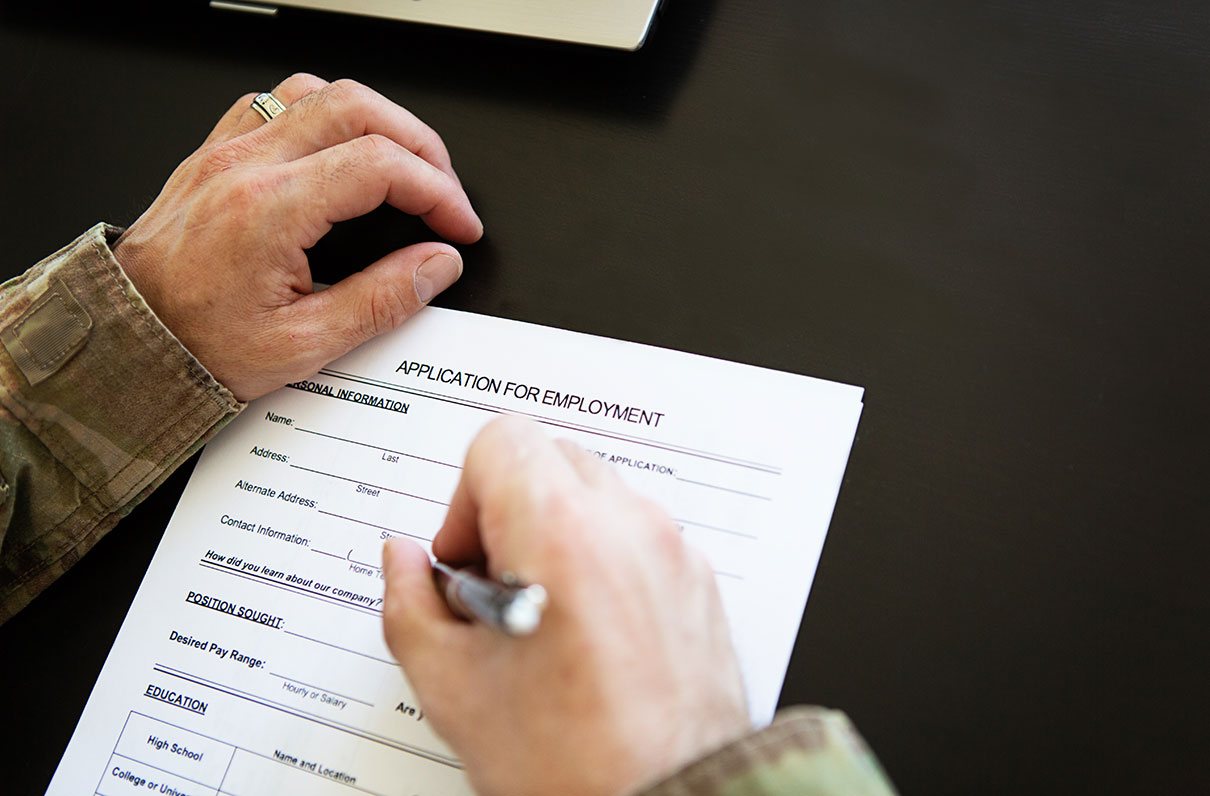MivPiv / GettyImages
The low unemployment rate of veterans has been touted for years as a success story by Congress, the administration, and private industry. There is no doubt veteran unemployment has improved significantly since 2011 when veterans ages 18-24 faced unemployment rates of 29-percent. As of March, the overall veteran unemployment rate was 3.7-percent.
However, data from the Bureau of Labor Statistics (BLS) shows veterans ages 25-34 are still facing employment challenges. According to the agency, veterans within that age group had unemployment rates 33-percent higher than their nonveteran peers. Female veterans in same age group fared worse, showing a 78-percent higher likelihood of being unemployed.
| March 2018 | Veteran | Nonveteran |
| Overall | 3.7 percent | 4.2 percent |
| Men 25-34 | 6 percent | 4.5 percent |
| Women 25-34 | 8 percent | 4.5 percent |
Last week, the House Veterans Affairs Committee invited representatives from major employers to discuss hiring and retaining veterans in the workforce. The companies that testified gave remarkable examples of their efforts to attract, hire, and retain veterans, National Guard and Reserve members, and their spouses to their companies. Walmart, Starbucks, Prudential Financial, and Dell EMC all provided great narratives of their successes.
These efforts have, no doubt, been some of the driving factors in the dramatic reduction of veteran unemployment since 2011, but the question remains as to why veterans in the 25-34 age range still have higher unemployment rates than their nonveteran peers.
According to the BLS, this amounts to over 218,000 unemployed veterans.
Also unclear from the statistics is the number of veterans who are underemployed. Underemployment is generally defined as work that does not make full use of skills and abilities. When discussing underemployment with congressional staff, representatives from MOAA were told tracking that information is essentially too difficult to accurately measure.
A 2016 Georgetown University study found that workers who had military experience reported being underemployed 14-percent more often than their civilian peers.
Unfortunately, none of the companies that testified last week were asked about veteran or military spouse underemployment. However, lawmakers did ask the companies what could be done to increase hiring. Representatives from Dell EMC and Starbucks mentioned increases in telework opportunities and working license portability, both issues that MOAA is currently working on.
Left unaddressed by Congress was what can be done to increase veteran hiring by small businesses. The U.S. Small Business Association estimates that while 21.6 million people in the U.S. are government employees, 59.7 million are small business employees, and there are over 28 million small businesses in the U.S.
It's commendable that large corporations like Walmart and Prudential Financial have large scale programs like Veterans Welcome Home Commitment and VETalent, respectively, but what about the myriad of other employers that don't have the capital assets for such initiatives? This might be the area Congress really needs to address.
While it's nice to hear multibillion dollar corporations have made such great progress, that does little to inform Congress about what needs to be done to increase veteran hiring at the 28 million small businesses in the U.S. MOAA will work to get Congress to address this need through hearings and legislative initiatives.
To share your thoughts about veteran employment, please send us an email at legis@moaa.org
